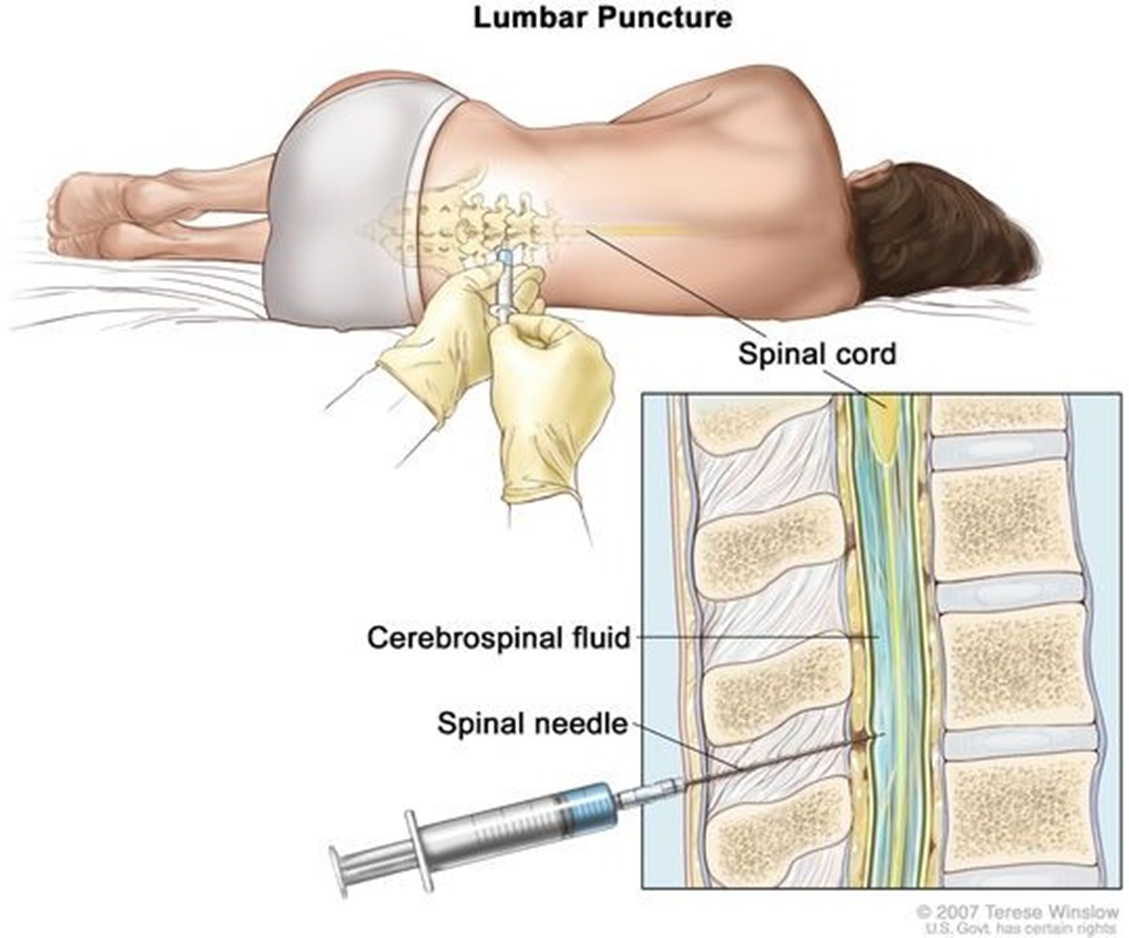The nurse is caring for a client admitted to the hospital with a tentative diagnosis of bacterial meningitis. Which diagnostic procedure should the nurse prepare the client for the healthcare provider?
Lumbar puncture.
Skull radiography.
Magnetic resonance imaging (MRI).
Computerized tomography (CT) scan.
The Correct Answer is A
Choice A rationale
A lumbar puncture is a key diagnostic procedure for suspected bacterial meningitis. It allows for the collection of cerebrospinal fluid, which can be analyzed for signs of bacterial infection.
Choice B rationale
Skull radiography is not typically used to diagnose bacterial meningitis. While it can help identify abnormalities in the structure of the skull or brain, it cannot detect the presence of bacteria.
Choice C rationale
While an MRI can provide detailed images of the brain and surrounding tissues, it is not the primary tool for diagnosing bacterial meningitis. It may be used in conjunction with other tests, but a lumbar puncture is more definitive.
Choice D rationale
A CT scan can be used to detect abnormalities in the brain, such as swelling or inflammation, which could be indicative of meningitis. However, it cannot definitively diagnose bacterial meningitis.

Nursing Test Bank
Naxlex Comprehensive Predictor Exams
Related Questions
Correct Answer is A
Explanation
Choice A rationale
Auscultating a bruit over the graft area of a client who has an arteriovenous (AV) graft in the right forearm for hemodialysis access is a normal finding. A bruit is a vibration felt over the graft that indicates blood flow. Therefore, the nurse should document the findings as it indicates the graft is patent and functioning properly.
Choice B rationale
Elevating the extremity is not necessary in this case. The presence of a bruit indicates that the graft is functioning properly.
Choice C rationale
Applying gentle pressure is not the appropriate intervention in this case. The presence of a bruit is a positive sign indicating the graft is functioning properly.
Choice D rationale
Assessing the client’s temperature is not directly related to the presence of a bruit over the graft area. The temperature would not provide information about the patency or function of the AV graft.
Correct Answer is D
Explanation
Choice A rationale
Brown, rough, greasy, wart-like papules on the face are not typically associated with overexposure to PUVA treatment. These symptoms could be indicative of a different skin condition.
Choice B rationale
Thick skin plaques topped by silvery-white scales are characteristic of psoriasis vulgaris, not overexposure to PUVA treatment. PUVA is used to treat these symptoms, not cause them.
Choice C rationale
Needing sunglasses because sunlight hurts the eyes is not a typical sign of overexposure to PUVA treatment. This could be a sign of a different issue, such as an eye condition or side effect from a different medication.
Choice D rationale
Tenderness upon palpation and generalized erythema are signs of overexposure to PUVA treatment. If a patient is overexposed to PUVA, they may experience a burning sensation, discomfort, and redness at the treatment site.
Whether you are a student looking to ace your exams or a practicing nurse seeking to enhance your expertise , our nursing education contents will empower you with the confidence and competence to make a difference in the lives of patients and become a respected leader in the healthcare field.
Visit Naxlex, invest in your future and unlock endless possibilities with our unparalleled nursing education contents today
Report Wrong Answer on the Current Question
Do you disagree with the answer? If yes, what is your expected answer? Explain.
Kindly be descriptive with the issue you are facing.
